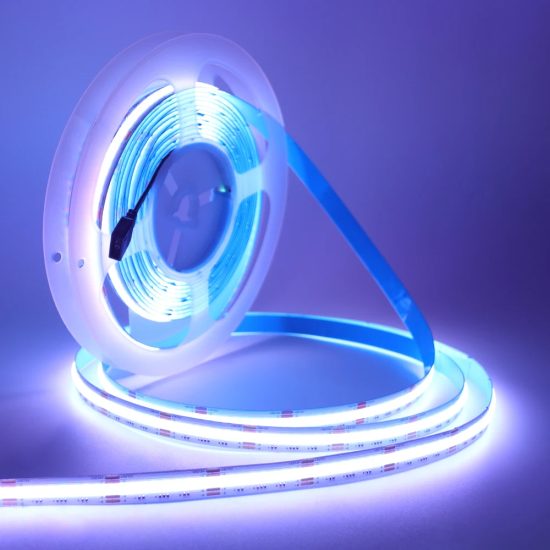Introduction: The color temperature of lighting plays a crucial role in shaping the mood and atmosphere of any space. LED strip lights, with their versatile color options, allow users to create customized lighting experiences. This article explores the concept of color temperature and how it influences the ambiance when using LED strip lights.
- What is Color Temperature? Begin by explaining the concept of color temperature, measured in Kelvin (K). Lower temperatures, around 2700K, emit warm and cozy light, while higher temperatures, around 5000K and above, produce cooler and more energetic light.
- Warm vs. Cool: Setting the Tone: Discuss how warm-toned LED strip lights (ranging from 2700K to 3500K) create a cozy and intimate atmosphere, ideal for bedrooms and living rooms. In contrast, cool-toned lights (3500K and above) are suitable for spaces where focus and alertness are essential, such as offices or kitchens.
- Natural Daylight: Balancing Act: Explore the benefits of LED strip lights with color temperatures resembling natural daylight (5000K to 6500K). These lights provide a balanced and neutral illumination that mimics sunlight, promoting productivity and creating a vibrant atmosphere.
- Task-Specific Lighting: Highlight how color temperature can be tailored to specific tasks. For instance, cooler temperatures are suitable for task-oriented areas like kitchens, while warmer tones enhance relaxation in spaces dedicated to leisure and comfort.
- Creating Ambiance with Dimming: Discuss the impact of dimmable LED strip lights on color temperature. Dimming allows users to adjust the intensity of light, altering the mood and ambiance. Lowering the brightness can transform a lively atmosphere into a calming one.
- Dynamic Lighting Scenes: Explore the trend of dynamic lighting scenes, where LED strip lights transition between various color temperatures. This feature allows users to adapt the lighting to different activities, from a warm and cozy movie night to a vibrant and energetic social gathering.
- Biological Impact: Circadian Rhythms: Touch upon the influence of color temperature on circadian rhythms. Exposure to cooler temperatures during the day and warmer tones in the evening can contribute to a healthy sleep-wake cycle, positively impacting overall well-being.
- Personalization and Flexibility: Emphasize the versatility of LED strip lights in terms of color temperature options. Users can experiment with different tones to find the perfect balance that aligns with their personal preferences and the intended atmosphere of each space.
Conclusion: Understanding color temperature is key to harnessing the full potential of LED strip lights in shaping the mood and atmosphere of your living spaces. Whether you prefer the warmth of a cozy evening or the energy of daylight, LED strip lights offer a spectrum of possibilities to create customized lighting experiences. By exploring and embracing the impact of color temperature, you can elevate the ambiance of your home to new heights.


